Kris Wood is working in visual effects for over 15 years. He has worked on various shows such as Nightflyers, Treadstone, The Harder They Fall and Reacher.
Steve Garrad has nearly 30 years’ experience in visual effects. He began his career in 1995 at Cinesite and went on to work at DNEG, Image Engine and Method Studios. He has been responsible for the visual effects on projects such as The Meg, Ford v Ferrari, Extraction and Spiderhead.
What is your background?
Steve Garrad // I’ve been working in visual effects for 29 years now. After graduating from Canterbury Christ Church University with a degree in film / history, I started as a runner at Cinesite London working my way up the ladder via editorial and scanning & recording, eventually becoming a VFX producer. After 6 years at Cinesite I moved to a commercials / music video boutique called Clear, I consequently set up a small film department there. A few years later an opportunity arose at Double Negative and I was lucky enough to join just as the VFX film market exploded in London and the company grew from 80 to 500 in 5 years. It was a great time but the VFX market fundamentally changed from a boutique industry to a mainstream industry. I then had the chance to go to Vancouver in Canada, the market reminded me a lot of London before the boom and I consequently helped Image Engine grow to 400 before going back to Double Negative to set up their Vancouver operation as the first employee. Consequently I went to the production side and was fortunate enough to get The Meg as my first project. Thereafter I spent a couple interesting years at Method Vancouver as Head of Studio before returning to the production side, working for Netflix for the last 3 films in a row.
How did you get involved on this show?
Kris Wood // Having a great relationship with our VFX Exec at Netflix allowed me the opportunity to interview with Gary and Brent.
Steve Garrad // John Anderson, who was the Netflix VFX executive on the film, asked me if I was interested in interviewing with Gary for the job, which I did and I was lucky enough to get the job.
How was the collaboration with the Director F. Gary Gray?
Kris Wood // Gray was very supportive, often encouraging us to bring ideas to the table while keeping his ultimate vision for the film as our driving force. His guidance and attention to detail kept our goals lofty right to the finish line.
Steve Garrad // Gary is an excellent collaborator, he has worked on huge VFX films previously, so understands our department’s needs and whims!
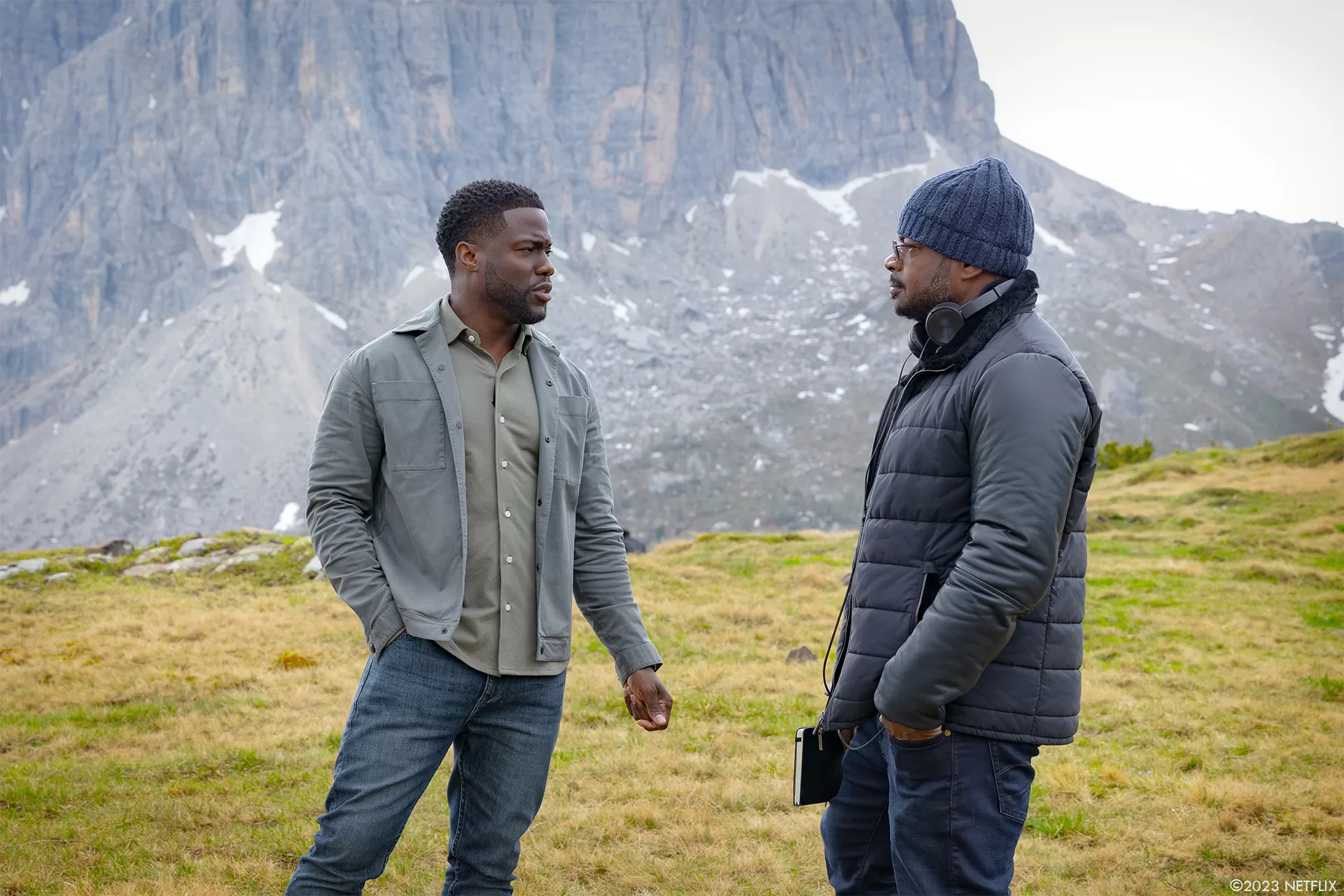
What was his approach to the visual effects?
Kris Wood // The conversations were often geared towards putting something new on screen while making it the best it could be. We tried to respect real physics limits to keep it believable while still making it exciting.
Steve Garrad // He always wanted to have a physical benchmark in reality, for example shooting on an actual set as opposed to a full bluescreen set. That way there was always something to use as reference. Another example was the interior jet sets, which were sets on gimbels. This enabled the interior of the stealth jet set to be revolved entirely 360 degrees. Most of the time, those scenes are the actors actually spinning within the sets. It was a great place to start from.
How did you organize the work between you?
Kris Wood // Gary and his team had collected a lot of visual references that spoke to his vision. We spent a lot of time breaking down the aspects of what worked and what didn’t. Gray then offered latitude to develop looks and develop options using pre and post viz.
Steve Garrad // Kris Wood was the film’s VFX Supervisor and we worked very closely together, Kris drove the creative working closely with Gary and our DP Bernhard on the shoot and then with our editors in post. I kept tabs of whether we could afford it all!
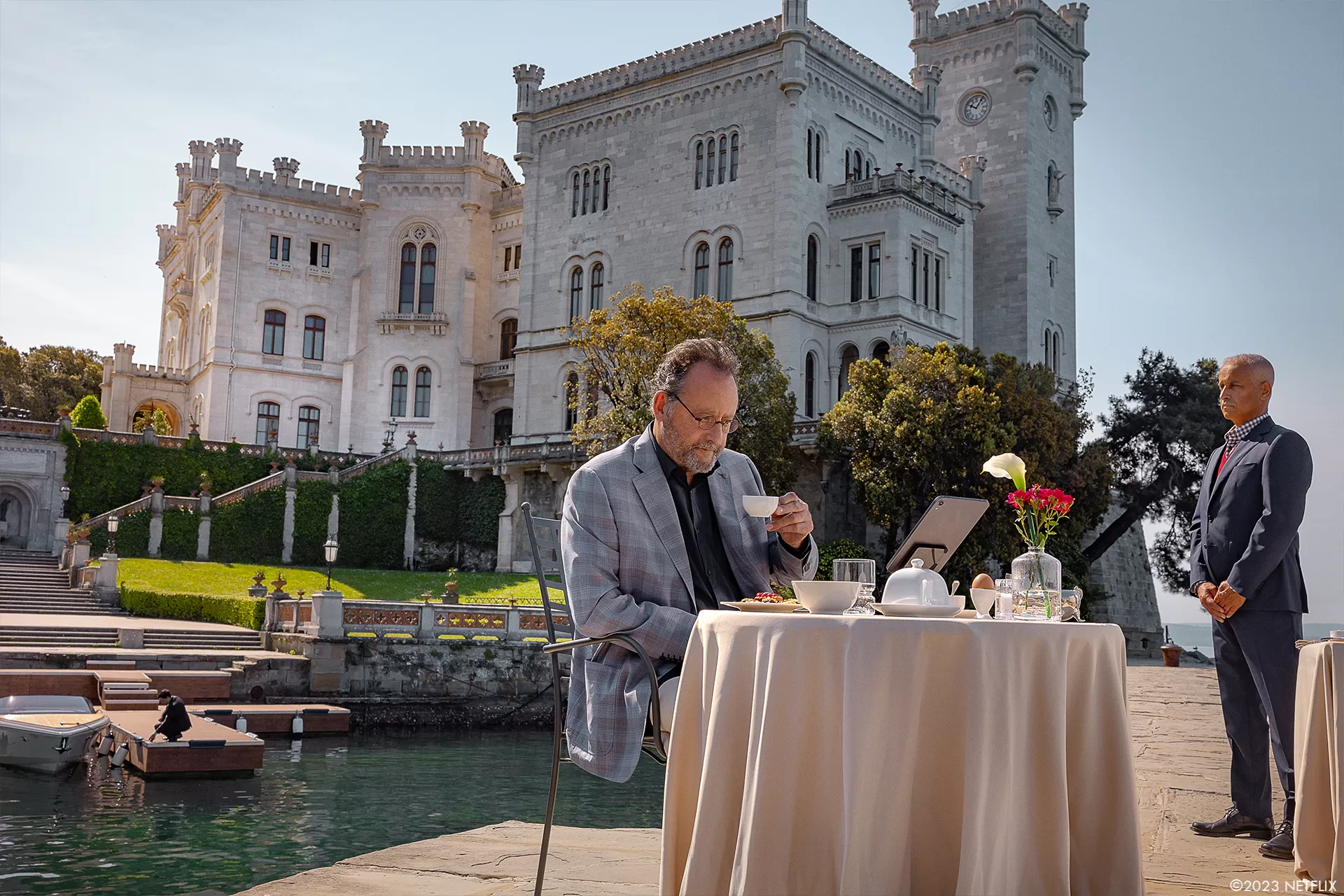
How did you choose the various vendors?
Kris Wood // Our initial recommendations were based on direct experience with those initial vendors. Followed by the usual vetting process to ensure that the Vendors we chose could handle the kinds of Visual Effects we needed to complete Lift.
Steve Garrad // Gary wanted to be involved with all the vendor choices, so myself and Kris vetted facilities that we felt confident working with before presenting their reels to Gary and the producers. Image Engine and DNEG were our main vendors based on the need to create photo realistic CG aircraft and environments and their reels backed that up. We then added Crafty Apes, Mr Wolf, BOT, Instinctual and an in-house team to fill all the remaining gaps. As the workload expanded in post we also employed Territory Studio in London to design and provide the graphics, Blind LTD created the NFT, Framestore created some hero macro work, Cinesite, Artemple and Vitality also provided excellent support.
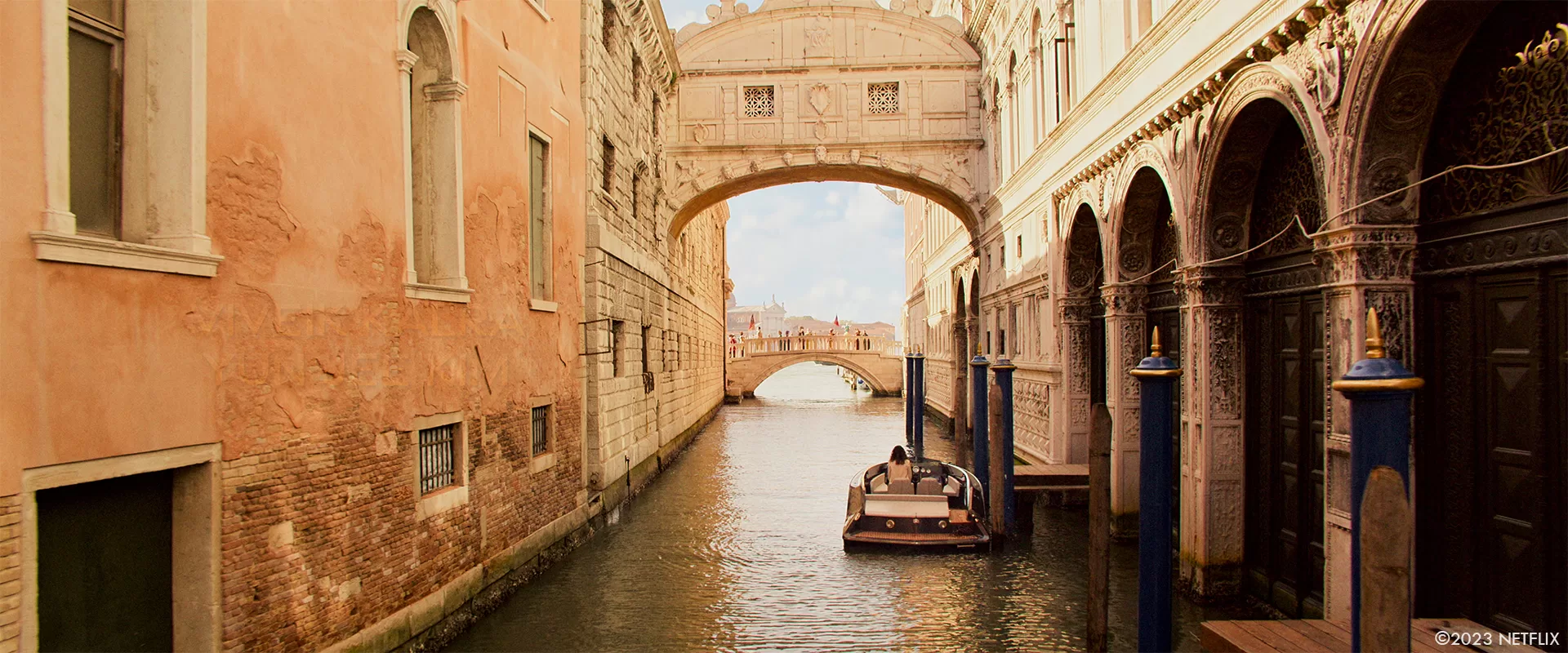
Can you tell us how you split the work amongst the vendors?
Kris Wood // Most of the choices about where to place the work were based on the strengths of those vendors. Due to how busy the industry was at the time some of the choices to share work were simply due to vendor capacity.
Steve Garrad // Image Engine took the lead on Molsen’s Jet / Stealth jet sequences, DNEG took on the A380 sequences, Crafty Apes did all the shots in Cyrus’s apartment, Mr Wolf worked on the car driving comps and a couple miscellaneous sequences, BOT worked on the Yacht sequence, Territory Studios in London provided all the graphics which were all comped by the in house team. Blind, also in London, did an amazing job creating N8’s NFT and back catalog. Framestore’s design team in London did a great job working on the full CG shots of the interior of the vault and its laser locking system. Cinesite picked up a couple of sequences that were originally assigned to Image Engine so we leveraged their ability to use the same asset pipeline as they’re part of the same group. Instinctual worked on the films beauty work. Artemple and Vitality jumped in at the end to help at get over the finish line, which was very much appreciated!
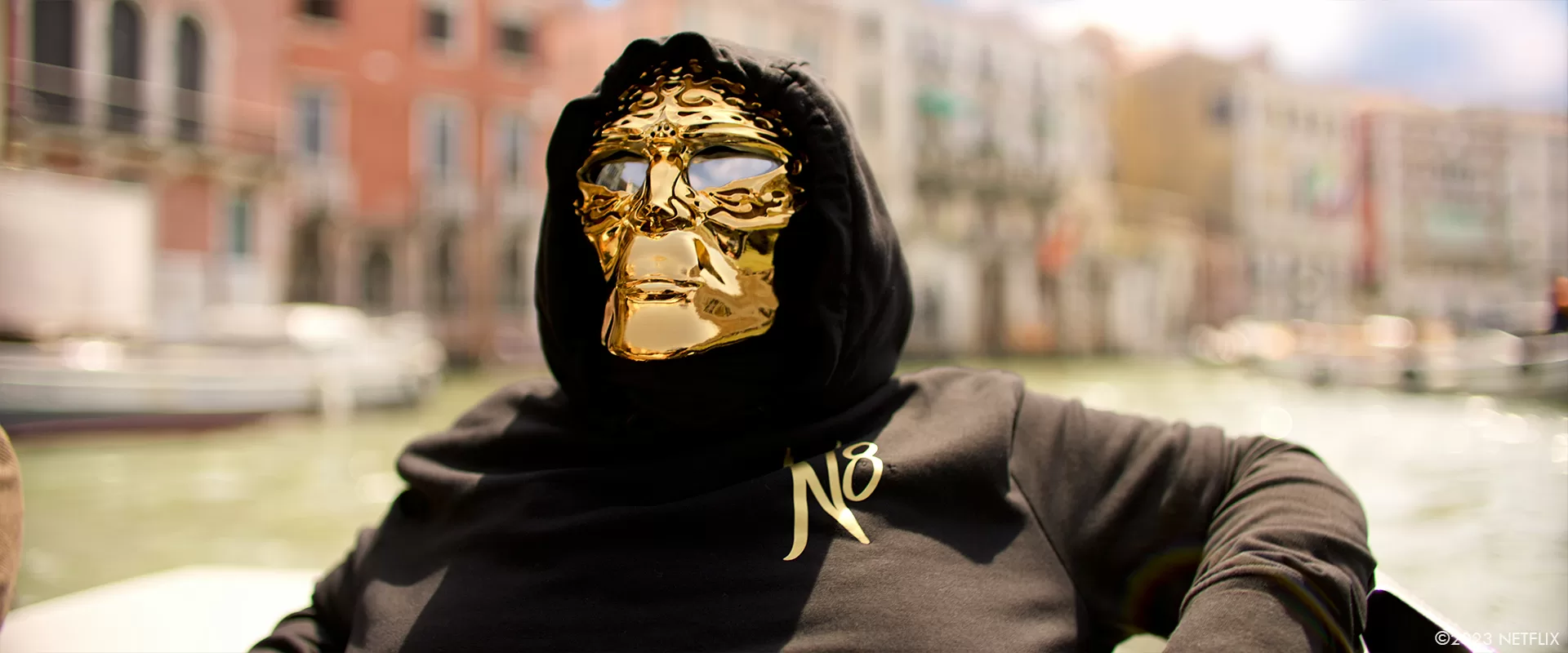
What were the main challenges faced by your team in creating the digital environments?
Kris Wood // Shooting an airplane movie with no access to real airplanes can be tough.
Steve Garrad // Balancing the need for reality with Gary’s desire to be creatively selective. Which you can argue happens on every film!
Can you give us an overview of the techniques used to make the digital environments more realistic?
Kris Wood // We added as many practical elements as possible to the CG locations and did detailed data and reference collection. Where we were shooting an entirely blue environment, and would go to locations to shoot plates and reference material for potential compatible environments.
Steve Garrad // Gary always wanted to start with a foothold in reality, so for the London exterior outside of Cyrus’s apartment, one of our data wranglers went up onto the rooftops of various buildings in London and took thousands of photos at different exposures and various times of the day and night. Crafty Apes led by Dave Morley then did a fantastic job of combining all those images making a ‘Hollywood’ version where we can see the London Eye to the Gherkin building all in one view!
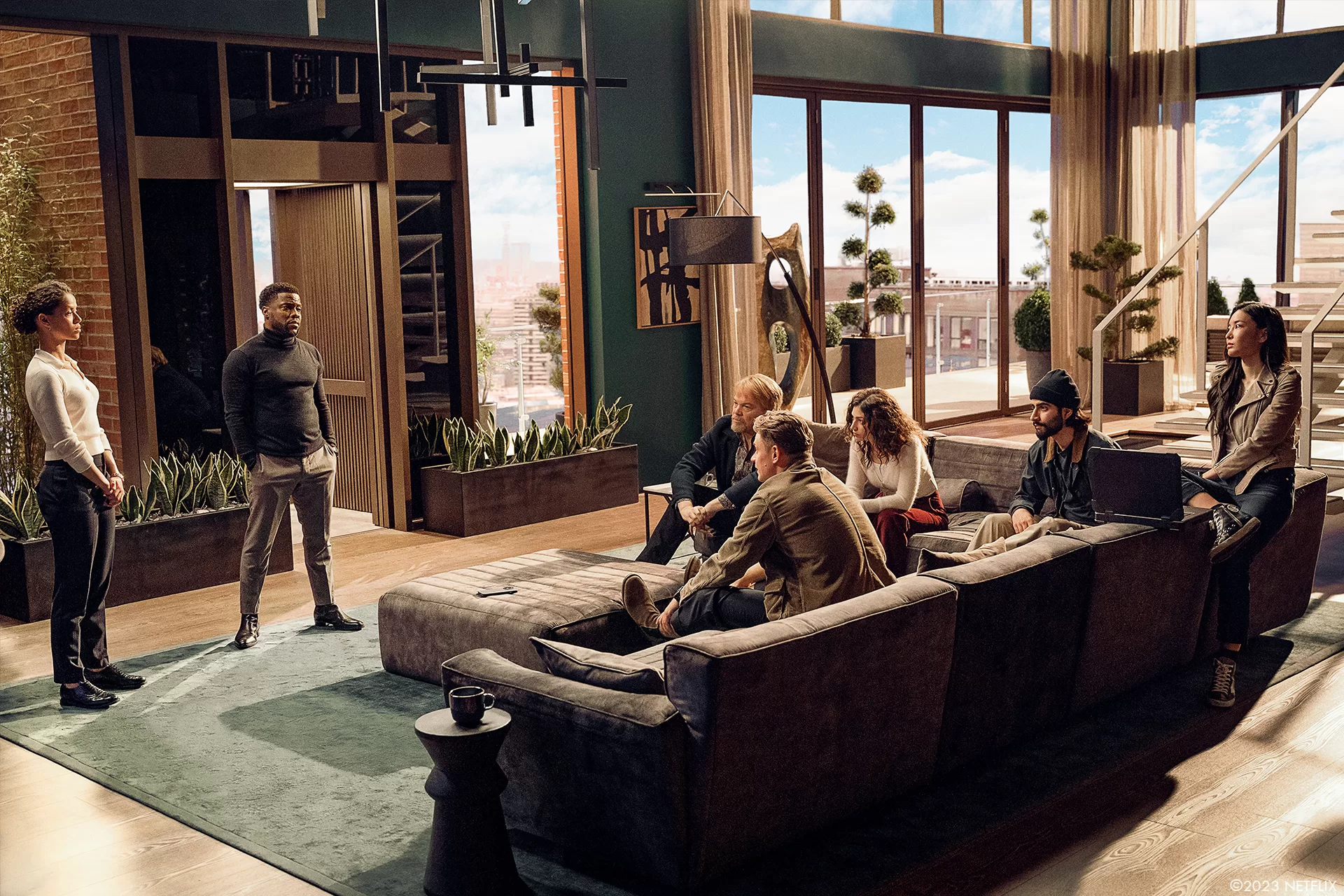
What are the specific aspects of creating visual effects for environments and how were these challenges overcome?
Kris Wood // A good example is the mansion exterior via additional photography. We shot exterior Italy in May and had to recreate the environment at a studio, in London, in January. We used plates to control some of the lighting setup and integrated a Sumo Light step for additional colour help. This approach allowed us to get within striking distance of the light quality to match the original photography on the Actors. Our team then integrated the reshoot material with plates where possible, scanned physical environments, and reference photography to build CGI environments of the castle where needed.
Steve Garrad // Kris’s mantra was that in every digital environment at any point in any VFX shot you should be able to look at a still frame and it looks real. So we tried to start everything with an actual point in reality. For example we sent one of our data wranglers and our Lidar vendor to an airplane graveyard outside Toulouse to scan and photograph an actual A380. We also made sure we had a lidar scan of every set / environment we could.
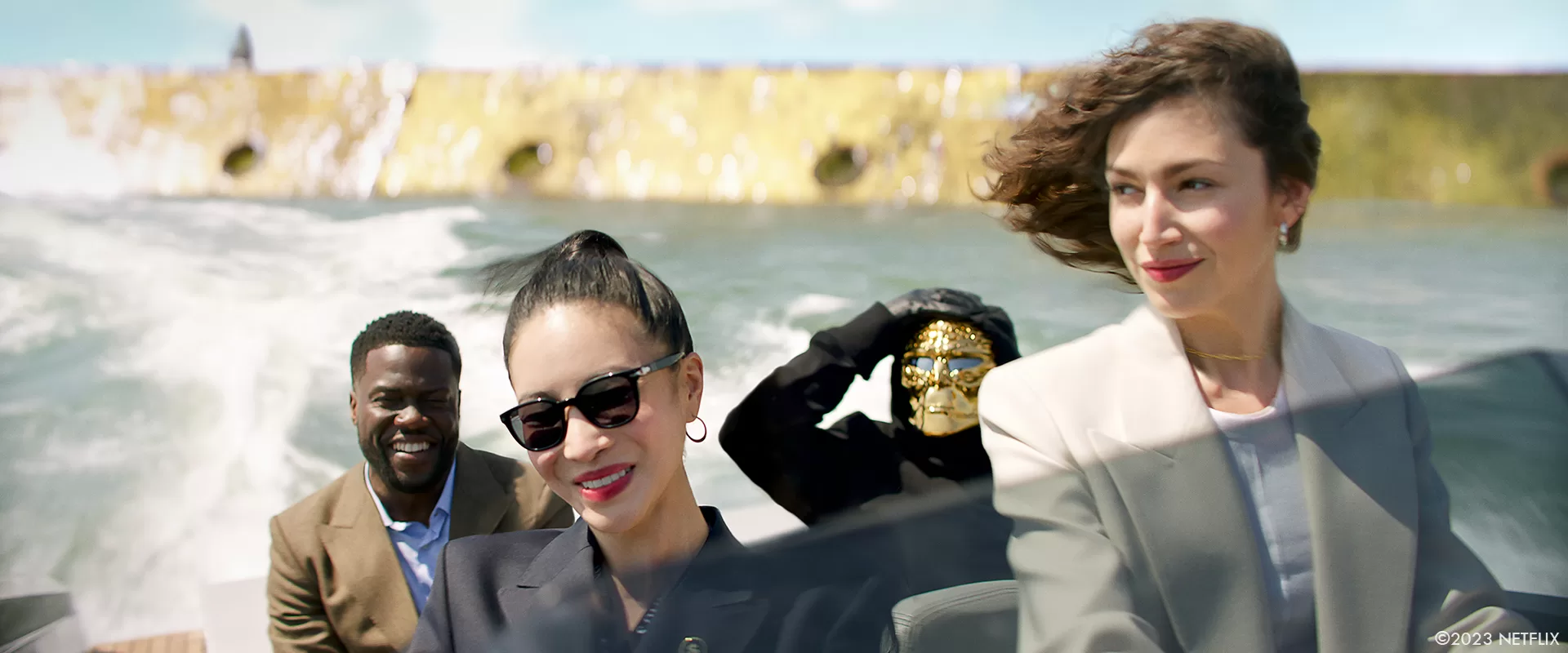
How did your team collaborate with other departments, such as art design and production, to ensure the seamless integration of digital environments?
Kris Wood // Having done mostly remote location work for the last 10 years we have learned that open communication and collaboration with all departments is crucial. My team and I pride ourselves on collecting and sharing as much information as we can with all departments regardless of it being VFX specific or not. Since our department is typically required to interact with all departments it makes sense for us to do what we can to support not only our own internal team, but all the other teams around us as well. As long as you can be decisive about what you need and you have established good communication with all departments then professional film crews will always go above and beyond to establish what is needed.
Steve Garrad // We had a great relationship with the other departments, the art department did an amazing job designing and creating all the environments. For the interior of Molsen’s Jet, which was a practical build, we took the CG model from the art department and used that – along with the lidar of the actual completed set – and were able to hand that all over to Image Engine to help with their CG build.
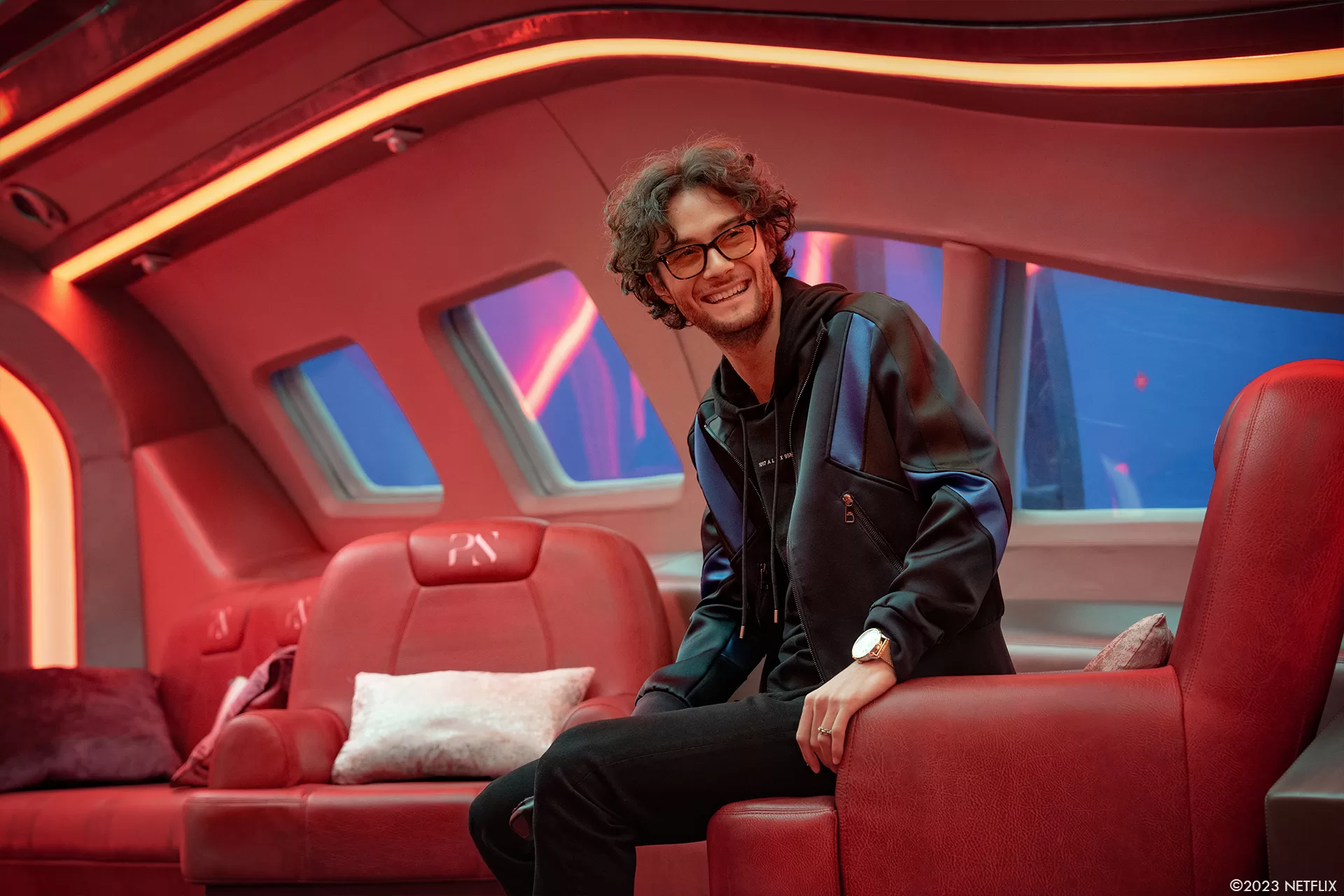
What were the artistic inspirations behind the design of the digital environments?
Kris Wood // Since most of the CG locations are based in reality, the inspiration came mostly from these real locations – Cyrus Apt is a London Skyline stitched together to create the environment outside his penthouse. The Tuscan Villa is a Tuscan Oceanfront Villa in Trieste, Italy. As mentioned above, locations like this were completely scanned using Lidar 3D scanning equipment. While locations like the Airport Hanger our Heros used to prep the Stealth Jet plane were nestled in lovely Irish towns such as Bally Kelly, locations like the private jet hanger were a little more amorphous but you don’t have to go far from Silicon Valley to follow the Tech-Bro reference.
Steve Garrad // We always started with Gary’s lookbook, so we had loads of references to start with. In general Gary’s preference is for reality, but a glossier ‘Hollywood’ version.
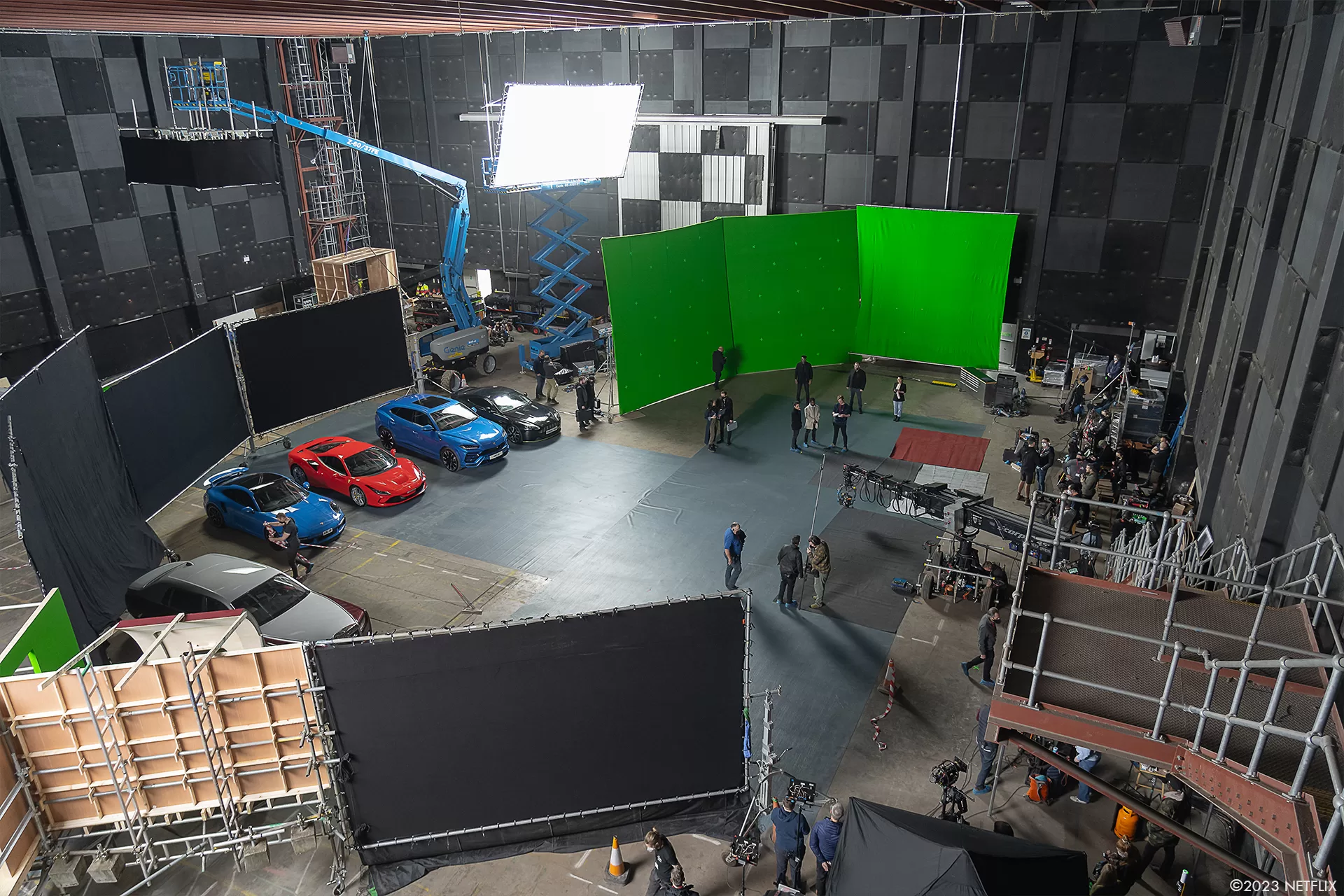
Can you elaborate about the design and creation of the two main planes?
Kris Wood // Since an operational A380 is a real plane that we did not have access to, we did the next best thing. We sent a team to and airplane graveyard in France to scan and photograph a retired plane. The interior of both planes were designed and built by our amazing art and construction departments. Since we already had interior dimensions and a rough exterior idea for the stealth jet, we had a solid starting point. We engaged a design company who offered up multiple options but ultimately it was the good people at Image Engine who delivered the final look. Gary was very involved in the design process and wanted to ensure it was cutting edge and included a variety of colour and design cues.
Steve Garrad // The A380 was based on an actual A380, of course the airline was fictitious, we went through a few different colour & design variations before ending up with the final design. Molsen’s jet had an actual interior built as a set but the exterior was altered after the shoot, as Gary wanted it to look more futuristic and we played around with various colour schemes until we came up with the final approved version.
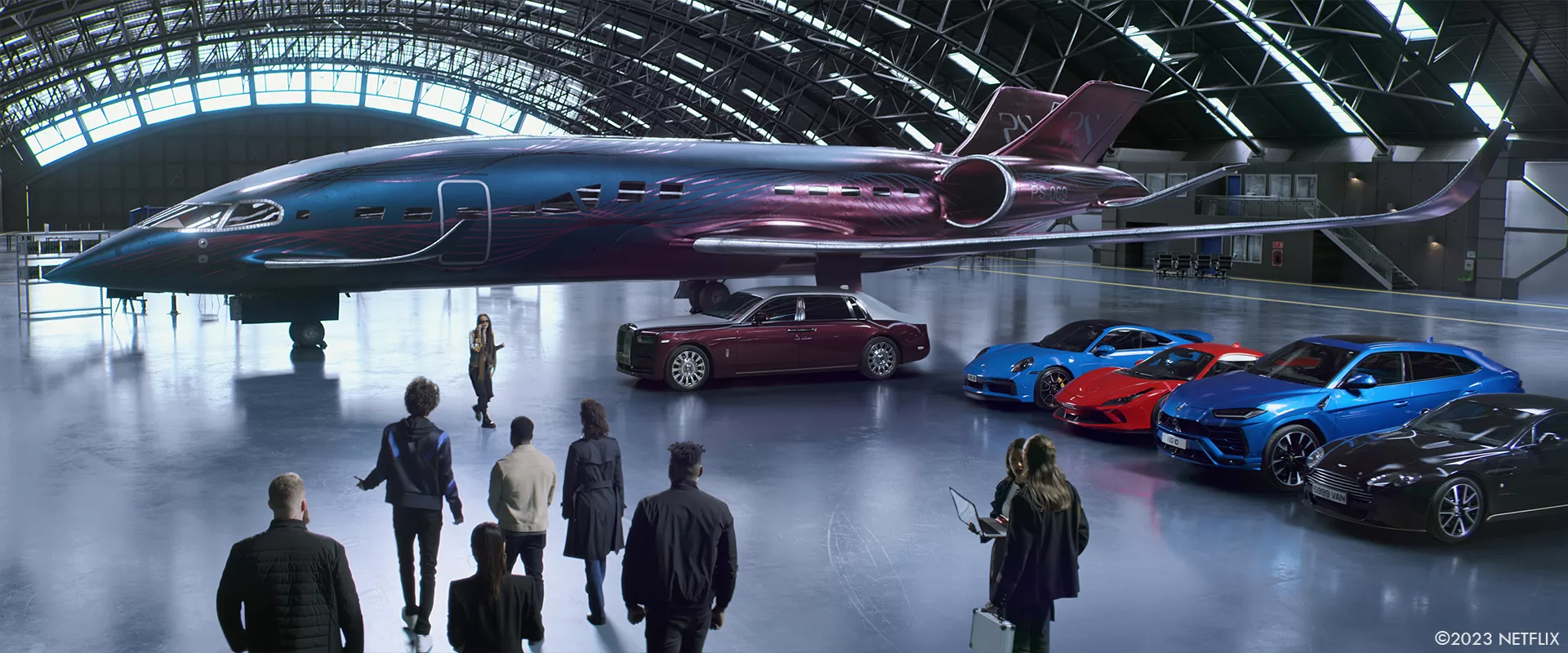
Did you receive specific references and influences for the stealth jet?
Kris Wood // Gary provided a lot of reference styles and suggestions. The art department provided a great starting point with the dimensions and general shape of the plane. It continued to evolve from there until we got to the look you see today.
Steve Garrad // Gary had a ‘living’ look document for everything in the film; assets, environments, even skies with the cloud types he prefered, which was a fantastic place to jump off from. He even replaced the references with the actual approved creations as we went through the whole process.
Were there times when the initial vision of digital planes evolved during the production of the film, and how did you adapt the visual effects accordingly?
Kris Wood // We agreed on the physical dimensions of the private jet fairly early and they didn’t change. This was essential for the hangar scenes where the characters needed to interact with the plane and so the plane fit and looked balanced in the space. The material and application of the stealth material went through several iterations before the project was complete. To integrate these we changed the tools in peoples hands and added thing like spay or sparks coming from different tools.
Steve Garrad // Interestingly enough the final design for the stealth jet – the junkyard dog version – was a complete out of the box look created by Image Engine’s Andy Walker and his concept artist Rob Jensen. It was so different than we’d previously been thinking that we had to change additional shots in which the crew had been interacting with the stealth panels to match the new junkyard dog design.
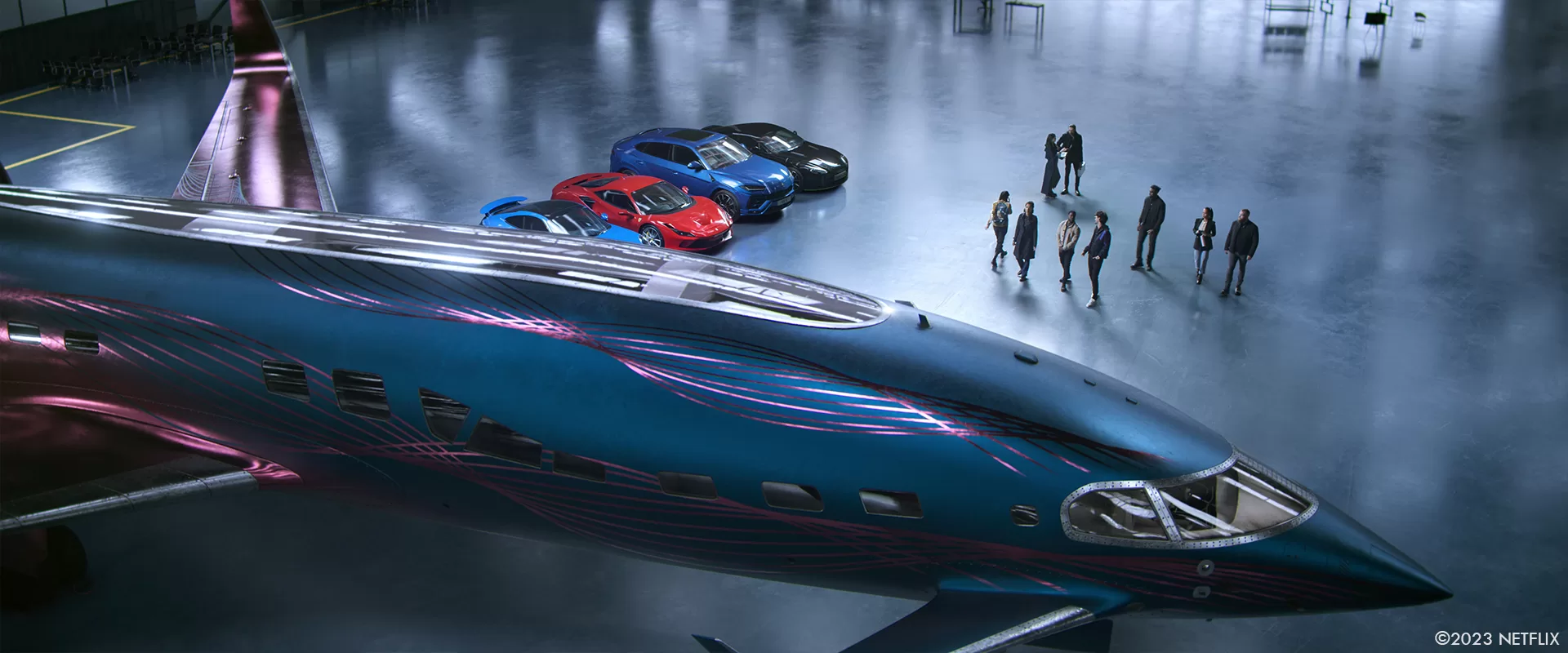
What kind of techniques did you use for the background plates inside the planes and for the apartment?
Kris Wood // All of the BG plates for the planes and apartment are full CG. The teams at Image Engine, Crafty Apes Van and dNeg took reference and guidance from us and created them. Rooftop photography in London was used to provide DMP material for the apartment and the reflections we added to make the glass look real. We plated, 3D Lidar scanned, and photographed multiple airport locations for the tarmac plane work and similarly for the Villa crash. The sky work was all based on reference and choices we made regarding the progression of weather and the time of day but the skies, clouds and mountains were all the work of some incredible artists.
Steve Garrad // Nothing groundbreaking here, good old fashioned photographic elements augmented with DMP or 2.5D techniques as necessary, just done really well. Shout out to Crafty Apes and Artemple.
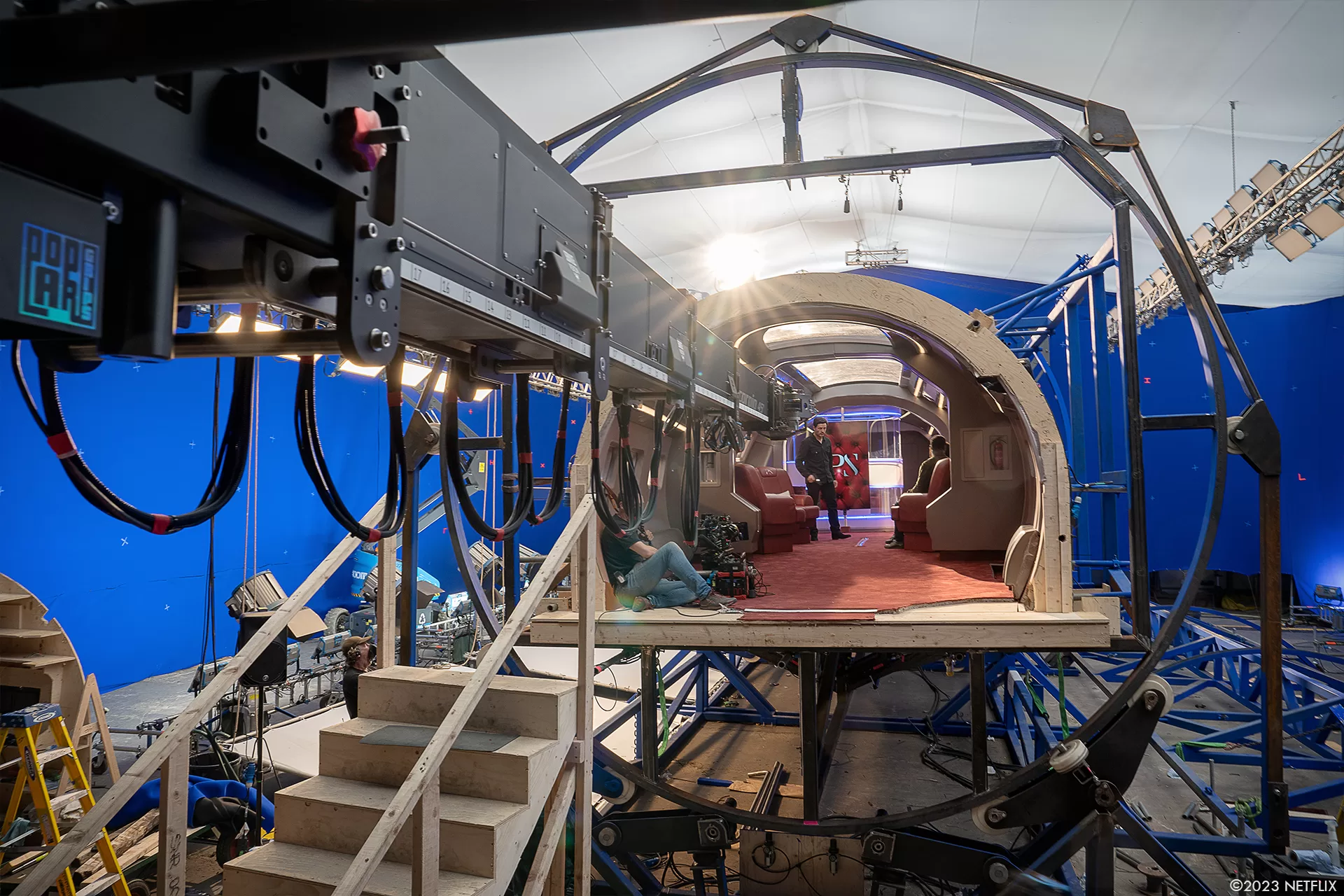
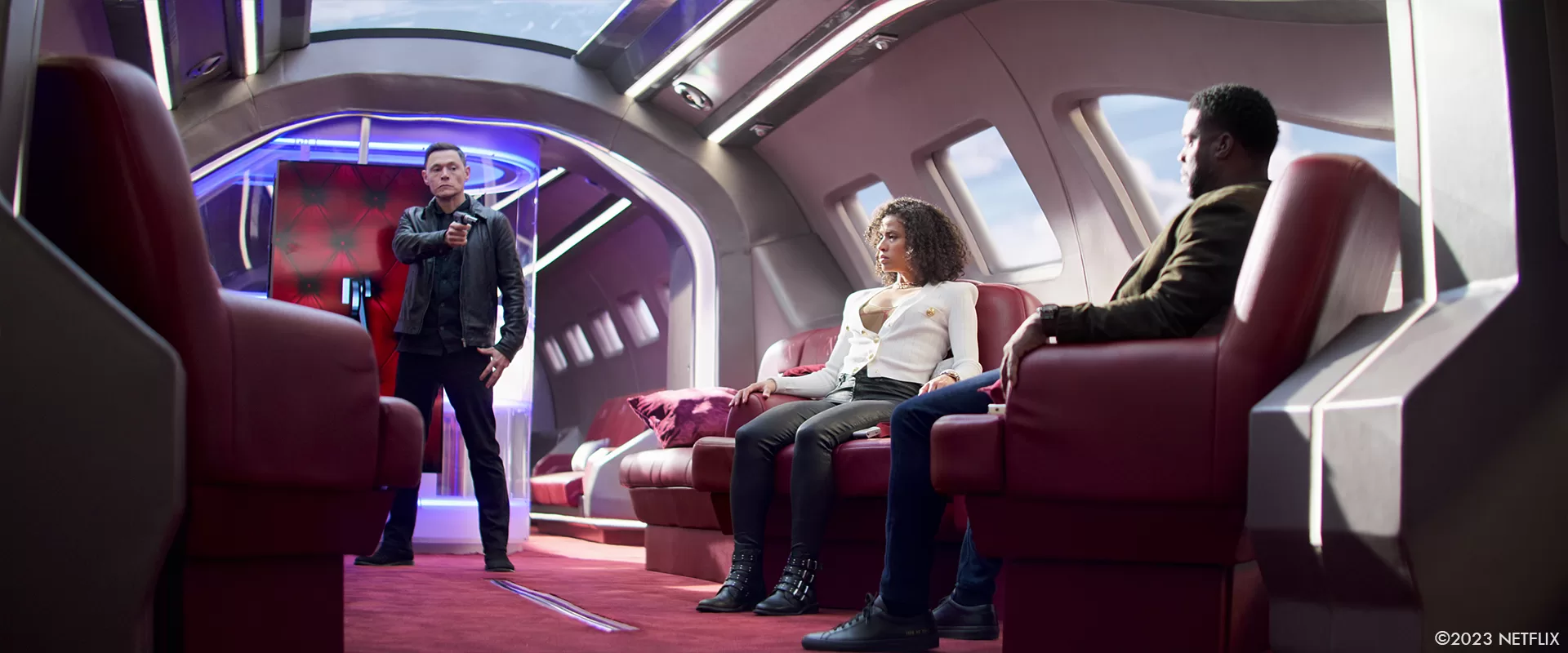
Did you want to reveal to us any other invisible effects?
Kris Wood // There was no glass/plexi used in Cyrus’s apartment. There was no lake at the top of the mountain. All the Venice skies needed clouds and blue sky added.
Steve Garrad // The ending sequence at the castle Miramare in Trieste featured more than a handful of shots from the reshoot (for dialogue purposes), these were shot against greenscreen inside a Shepperton soundstage in January. Opposed to the rest of the sequence that was all shot on location at Trieste in May the year previously. Kudos to Kris and our DP, they created a pseudo virtual stage where the greenscreen was lit by footage from the original shoot to ensure the lighting matched.
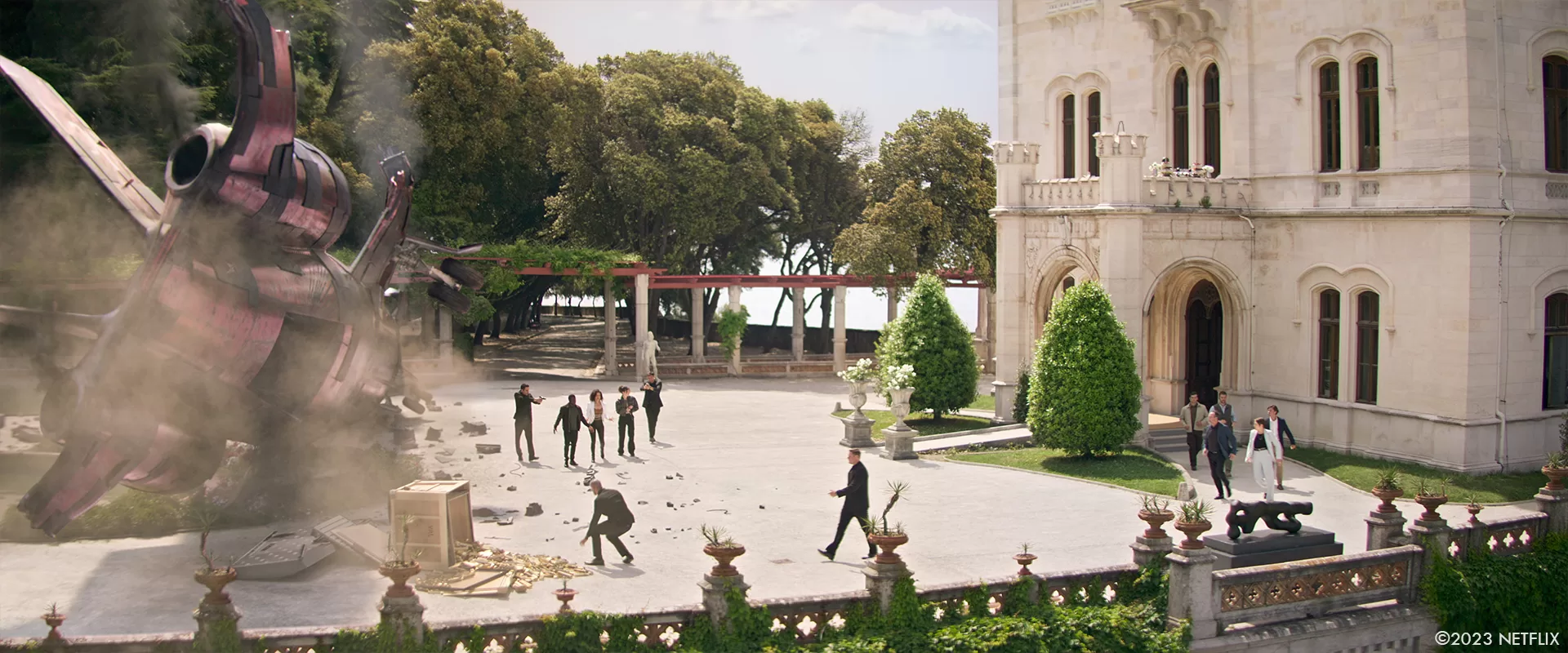
Which sequence or shot was the most challenging?
Kris Wood // Placing the stealth plane in a hangar that it barely fits and making it possible for the camera and characters to interact with the very large object is always a challenge but very rewarding. In this case we used several techniques from AR on an iPad Pro to VR for an internal walk through to good old tape and tennis balls. Good on the Actors because painting a plane that is not there must be hard.
Steve Garrad // The exterior sequence in the Alps after the A380 and stealth jet have landed, that was the only sequence that was shot entirely against bluescreen, so DNEG had to recreate pretty much everything, including shadows. It looked great by the time we delivered but it was a tough journey getting there.
Is there something specific that gives you some really short nights?
Kris Wood // A good Artist is never completely satisfied with everything, these things can get to you but we had a plan for all the sequences, ultimately you need to be comfortable with how the film looks. One is always one’s worst critic. That being said I always love to learn and grow and analyze so I know what I can do in the future to deliver an even better film next time.
Steve Garrad // Yep, the sequence above !
What is your favorite shot or sequence?
Kris Wood // This is a hard one. All the plane exterior work is great. The exterior shots of the A380 emergency landing were a blast to create with DNEG VFX. We had originally included more smoke and fire when the engines hit the snow as this would create unburned fuel that we thought would ignite further beyond the combustion chamber. We had to reduce that look as it came across as if the plane was going to explode.
Steve Garrad // The exterior shots of the F35’s and the stealth jet work fantastically well in my humble opinion. The A380 emergency landing also looked spectacular as well.
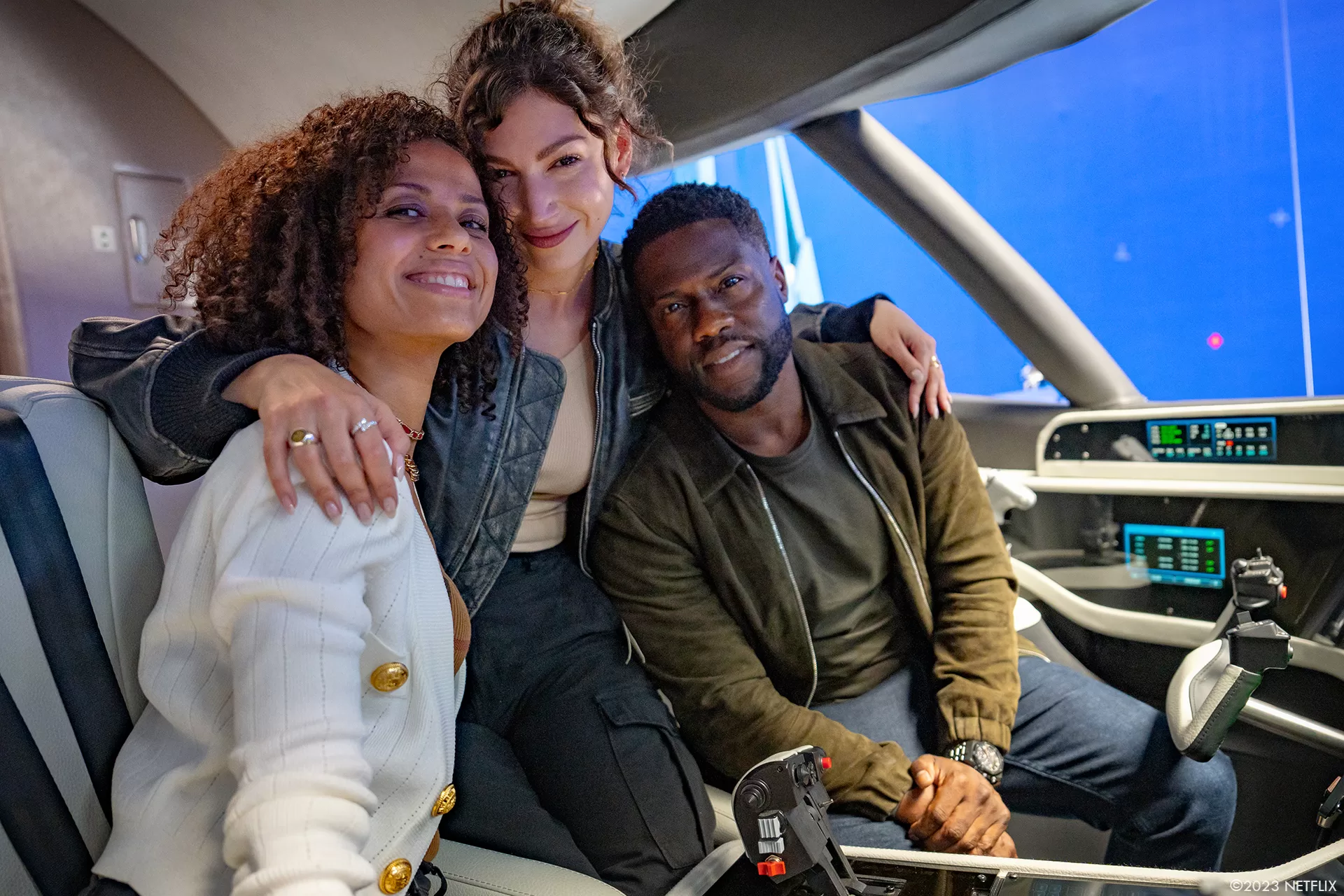
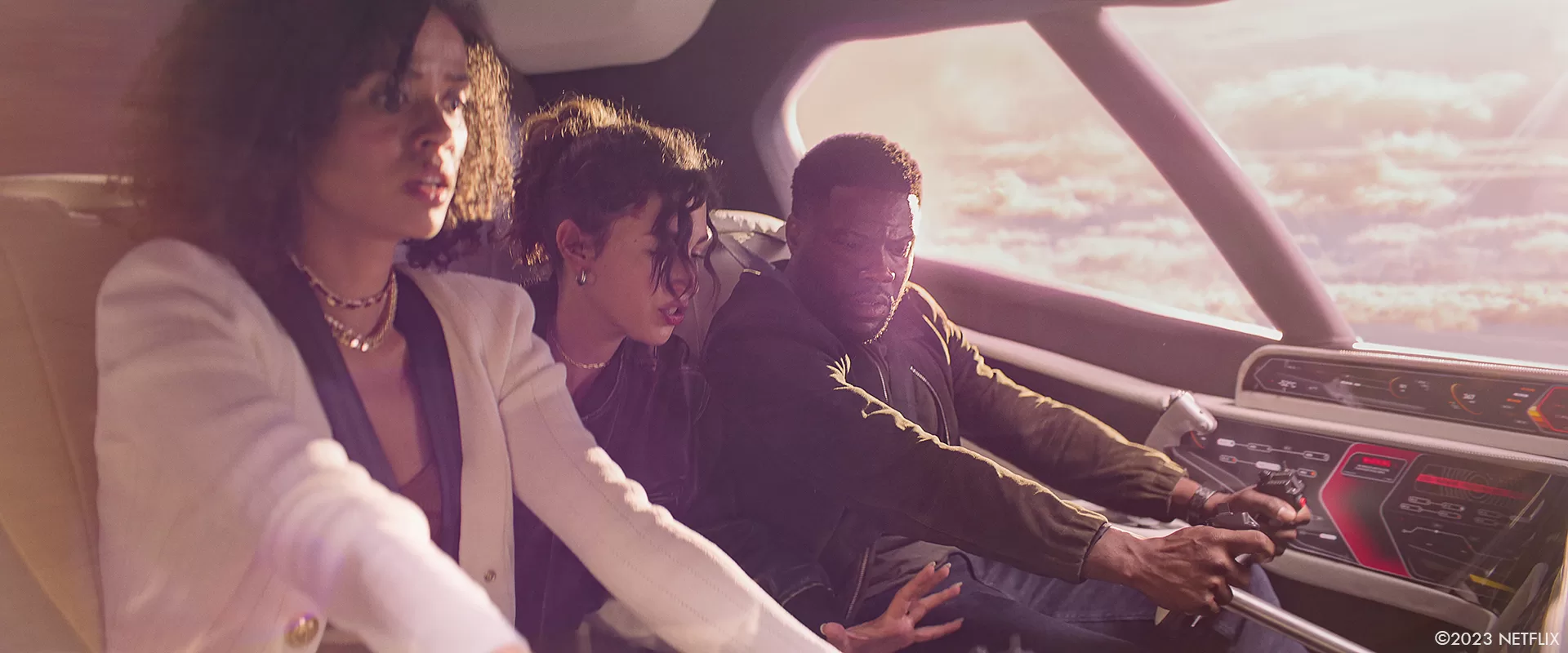
What is your best memory on this show?
Kris Wood // We had the incredible opportunity to work with multiple production teams around Europe, they were all amazing, helpful, generous and professional. I feel like we have new friends all over the region.
Steve Garrad // I really enjoyed the collaborative effort on this film. Gary had his opinions but was also willing to listen to other’s points of view.
How long have you worked on this show?
Kris Wood // Approximately 22 months.
Steve Garrad // I started in February 2022 and we delivered in October 2023.
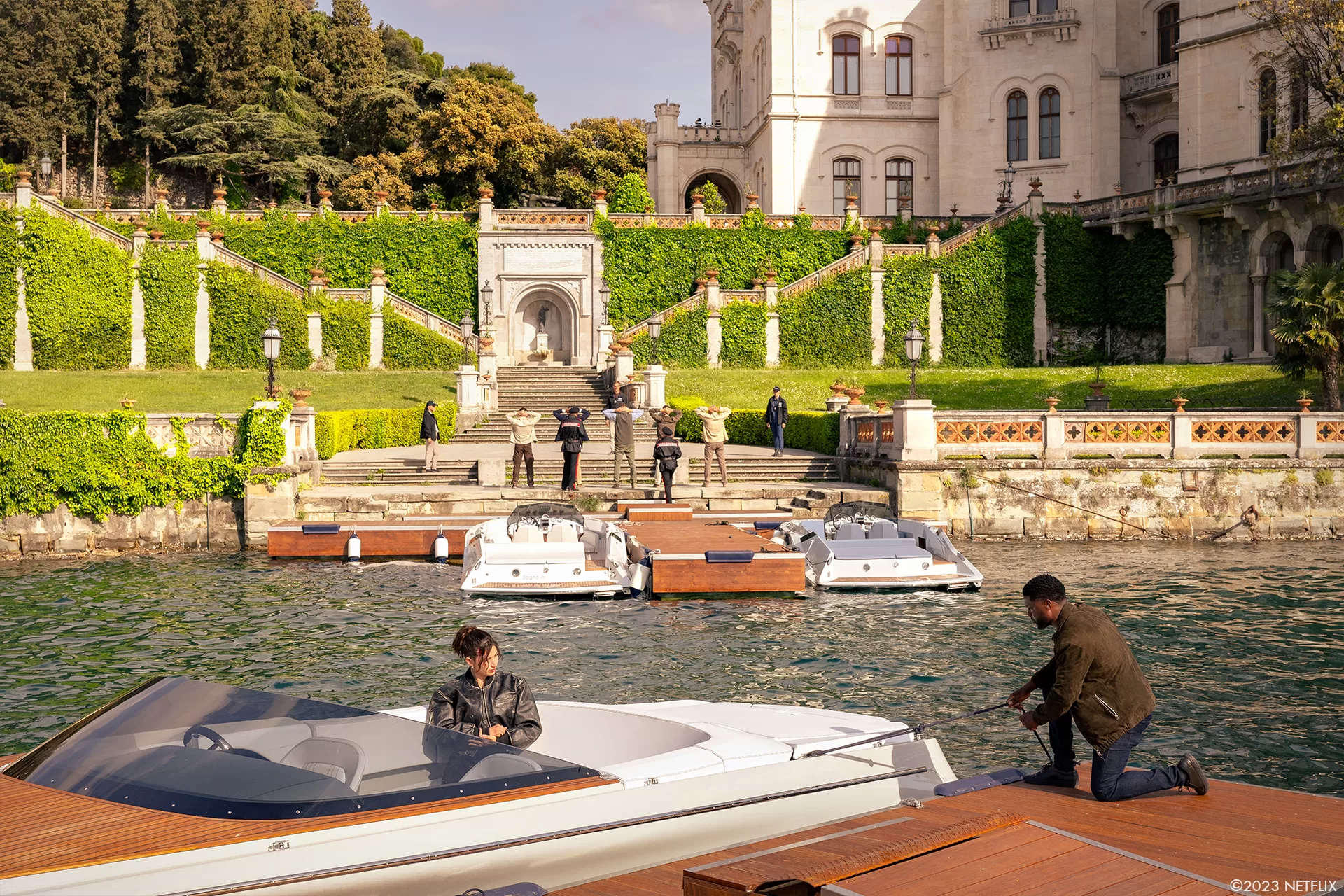
What’s the VFX shots count?
Kris Wood // Total number of shots in the movie is around 1700k.
Steve Garrad // We provided 1742 shots in total for the finished film.
What is your next project?
Kris Wood // With strikes and the New Year hitting there are lots of projects ramping up, but we have not committed to anything yet.
Steve Garrad // Like most people, I’m waiting for the industry to pick up after the strikes.
What are the four movies that gave you the passion for cinema?
Kris Wood // There are lots of good movies out there but I always go back to the classics. Blade Runner & The 5th Element for sure!
Steve Garrad // Sorry I need five, otherwise I just look like a sci-fi geek … Star Trek 2: Wrath of Khan, Back to the Future, The Empire Strikes Back, Terminator 2: Judgment Day and Cinema Paradiso.
A big thanks for your time.
WANT TO KNOW MORE?
DNEG: Dedicated page about Life on DNEG website.
Cinesite: Dedicated page about Life on Cinesite website.
Image Engine: Dedicated page about Lift on Image Engine website.
Netflix: You can watch Lift now on Netflix.
© Vincent Frei – The Art of VFX – 2024







Would love to see vfx breakdown of Molsen’s jet. Image Engine did a terrific job of blending it into the environment.